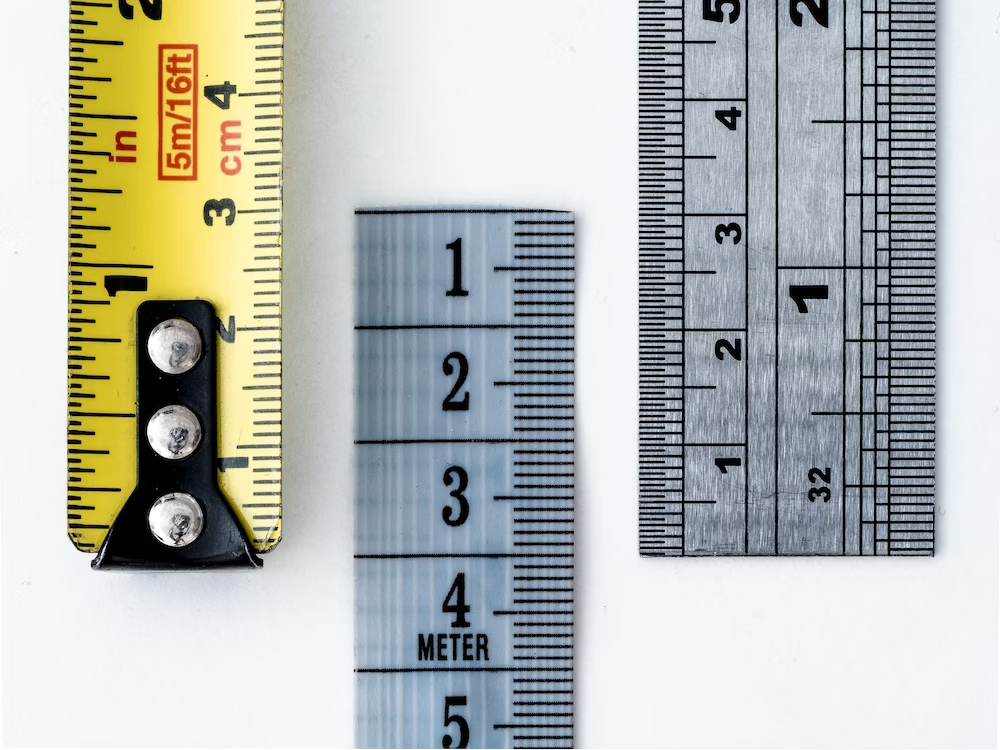Likert Scale Questionnaire: Designing Effective Surveys
- Introduction
- A quick review of survey research
- What is the Likert scale?
- Likert scale questions with examples
- Which type of question is a Likert type question?
- When to use a Likert scale question
- Likert scale advantages and disadvantages
- What are the limitations of Likert scales?
- How to write strong Likert scale questions
Introduction
Likert scales are an important aspect of survey research. While it is typically used in quantitative data analysis, Likert scale responses have useful applications as a complement to qualitative analysis as well.
Whether you measure attitudes or measure opinions through collecting data from surveys, understanding when and how to employ a Likert scale survey question is essential for your research.

A quick review of survey research
Surveys are an essential tool in qualitative research and social science research that allows researchers to capture perspectival data from potentially large numbers of respondents quickly and efficiently. It is quick because surveys can be distributed at scale, and it is efficient because the data collected from surveys can be easily organized for quantitative and qualitative analysis.
Surveys are also standardized because they ask the same questions to all respondents. This has a variety of implications, including the ability to compare responses and make assertions about the perspectives of certain groups of people.
Types of survey questions
Likert questions are just one type of question commonly found in surveys. Different survey items include multiple-choice questions, ranking questions, demographic questions, and open-ended questions.
In theory, any type of question can be posed in a survey. However, survey research tends to regress to a limited number of commonly employed question types that have been found to be easy to understand to keep the survey respondent engaged and willing to submit their responses.
Likert scale questions are one such type of question that is accessible to most respondents. Like most other commonly used survey question types, Likert scale questions also capture data easily and quickly in the form of numerical responses.
Another consideration is the type of data collected in surveys. Statistical data is typically classified into four groups: discrete data, continuous data, nominal data, and ordinal data. While the former two are collected for quantitative analysis (e.g., income level, body weight), nominal data and ordinal data are qualitative in nature (e.g., favorite sports, film ratings).
Likert scale questions are concerned with capturing ordinal data, as they allow for a qualitative understanding of respondents' perspectives. When numbers in Likert scale questions are used to represent perspectives as "exceptional," "good," "fair," "poor," or other terms, a researcher can provide additional, useful context to other responses in their survey.
At the same time, care should be taken when statistically analyzing and interpreting data from ordinal scales. The numerical values in such questions represent subjective perspectives; reducing opinions down to numbers can be problematic without sufficient contextualization of those opinions.

What is the Likert scale?
Likert scale survey questions collect data about respondents' perspectives in the form of numerical values.
In particular, Likert scale questions conceptualize perspectives on a continuum where respondents look at a statement and decide the extent to which they agree or disagree.
Using this kind of scale allows researchers to capture, at minimum, a general sense of what their respondents think about a particular concept or phenomenon.
Market research, for example, can employ a customer satisfaction survey with Likert scale options to gain a broad view of whether a product or service is accepted by a particular customer base.
What do Likert scale survey questions look like?
A typical Likert scale question looks like a multiple choice survey item. An item that employs a Likert scale commonly has a statement that people might agree or disagree with, followed by a set of numbers meant to represent the extent that a respondent aligns with the statement.
You have likely come across a set of 5-point Likert scale questions. These are questions that ask you about the extent of something, like whether you agree or disagree with a particular opinion. Other examples include indicating the extent to which each participant does something (e.g., ranging from "always" to "never") or likes something (e.g., ranging from "hate" to "love"). Each opinion is followed by the numbers 1 to 5 to represent a rating scale.
With these survey items, you select 1 if you strongly disagree, 5 if you strongly agree, or 3 if you neither agree nor disagree. The scale points 2 and 4 are there to provide additional choices about differing degrees of agreement.
Note that a Likert scale question need not have 5 values. Depending on your research question and your research design, you might employ a 3- or 10-point Likert scale question, for example.
That said, you may find that a 5-point Likert scale is typical in survey design. Ultimately, researchers should consider what scale strikes the right balance between giving respondents enough possible degrees of opinion without getting bogged down in too many possibilities and slowing down survey response time in data collection.

Likert scale questions with examples
Likert scale questionnaires can take on many forms. Ultimately, all forms of Likert scale items ask respondents to give a numerical representation of their perspective.
Likert scale examples include survey items that often ask whether they agree or disagree with a particular statement. These statements might look like "I am being paid fairly for the work that I do" or "I am satisfied with the help the customer service team provided."
Another kind of survey item that uses Likert scales might ask respondents to rate their level of approval with a particular product or service. The rating scale in this kind of question establishes a continuum between high approval and high disapproval of a product or service.
Which type of question is a Likert type question?
Questions that employ Likert scales collect data using rating scales where the answers are ordered but do not correlate to absolute or equally spaced values. It is useful to think of Likert scale responses as as a continuum stretching between two extremes or opposite poles.
Using this idea, there are two types of scales that are used when collecting data with Likert scales.
Bipolar scale
When you are looking to measure sentiments or opinions along a continuum of two opposites, bipolar scales are useful to acknowledge that both opposites are valid. In many cases, the middle response in a bipolar Likert scale question is zero while the positive and negative values correspond to each of the two opposites.
Researchers may want to provide a middle point in Likert scale surveys to emphasize that respondents have a means to signal indifference or indecision about a particular topic or phenomenon.
Unipolar scale
A survey question that adopts a unipolar scale does not have such a middle point. In many cases, the type of question that survey researchers ask is the same (e.g., "Do you agree or disagree?"). Instead, unipolar scales place less emphasis on a middle ground or neutral value and more emphasis on the extent of agreement or approval.
When you need respondents to be more decisive in their choices, you may consider using a unipolar scale in Likert scale questions.

When to use a Likert scale question
As common as Likert scale questions are in surveys, they are more appropriate in certain aspects of a research inquiry than in others.
Lists of items
Likert scale responses are often sought for a series of items or topics at one time. For example, market researchers may use a Likert scale to assess opinions on a series of products or services.
Grouping these items together makes it easier for the respondent to quickly provide their opinions about a list of items, particularly when the process of answering these questions is the same throughout the series.
Defined values
Respondents' perspectives can be either open-ended (in which case, free-response questions are more appropriate) or confined to a particular continuum like agreement or approval. A Likert scale is useful for capturing the latter.
A well-crafted series of Likert scale questions places respondents' answers within a range defined by two opposite ends. If a range of opinions cannot be conceptualized in a linear fashion (e.g., political ideologies defined by multiple issues), consider using a different type of survey item.
Defined points
When opinions and perspectives can be assessed on an ordinal scale, a Likert scale survey helps bring clarity to where respondents stand by giving them defined points to choose (e.g., "strongly agree", "strongly disagree").
While care should be taken not to overly reduce respondents' answers to mere numbers, a Likert scale helps visualize a continuum of agreement or approval by providing respondents with a range of choices to choose from.

Likert scale advantages and disadvantages
Likert scale surveys have the advantage of collecting responses at scale, enabling the researcher to quickly collect a large number of Likert scale responses at once.
This is useful for statistical analysis and data visualizations in papers and presentations. With Likert scales, researchers can easily aggregate perspectival data and gain a general sense of where respondents' answers lie.
It's important to recognize that despite the convenience of reducing perspectival data down to numbers, there are caveats to a statistical analysis of data collected from Likert scales. Data from an ordinal scale cannot be assumed to have uniform numerical values.
In other words, a 5 is greater than a 4, but the difference may not be the same as that between a 4 and a 3, since respondents may have different opinions about what the numbers might mean.
As a result, data from Likert scale questions might be able to tell researchers the general perspective of respondents. Insights that indicate a slight approval of a product or service, for example, are going to look consequentially different from those that show widespread approval.
That said, researchers should not overestimate the precision that Likert scales can provide. The aggregated numbers from Likert scale data give a broad sense of perspectives more than they provide fine-grained detail about those opinions.
What are the limitations of Likert scales?
In qualitative research, critiques about Likert scale data apply to surveys in general. Survey items with predefined answer options (e.g., points on a scale, lists of choices, etc.) might give researchers the temptation to reduce opinions by making generalizations through statistical analysis.
Oftentimes, the best remedy for this limitation is to collect other data to further contextualize survey responses. Qualitative researchers can follow up on survey responses through open-ended questions, interviews, or focus group discussions to examine respondents' answers more deeply.
How to write strong Likert scale questions
There is a discipline to writing questions that involve a rating scale. Researchers should consider their survey design carefully, particularly with respect to survey questions that reduce respondents' opinions to simple values.
Two issues that researchers should consider are the consistency of items and the number of options they provide for each item.
Consistency of items
As respondents answer Likert scale items quickly, any inconsistency in the list of items might slow down response times or create confusion.
Market researchers, for example, should only group similar items together in a set of Likert scale questions. Be sure to group items into similar categories (e.g., products, services, etc.) to ensure that respondents can easily answer survey questions.
Number of values
Researchers should also consider whether their Likert scale questions have a middle value. In other words, should the response scale have an odd number or even number of responses? This determines if there is a middle value that represents indifference or indecision.
This decision essentially affects how respondents answer survey questions. Ultimately, this also informs data analysis and how data should be interpreted.




